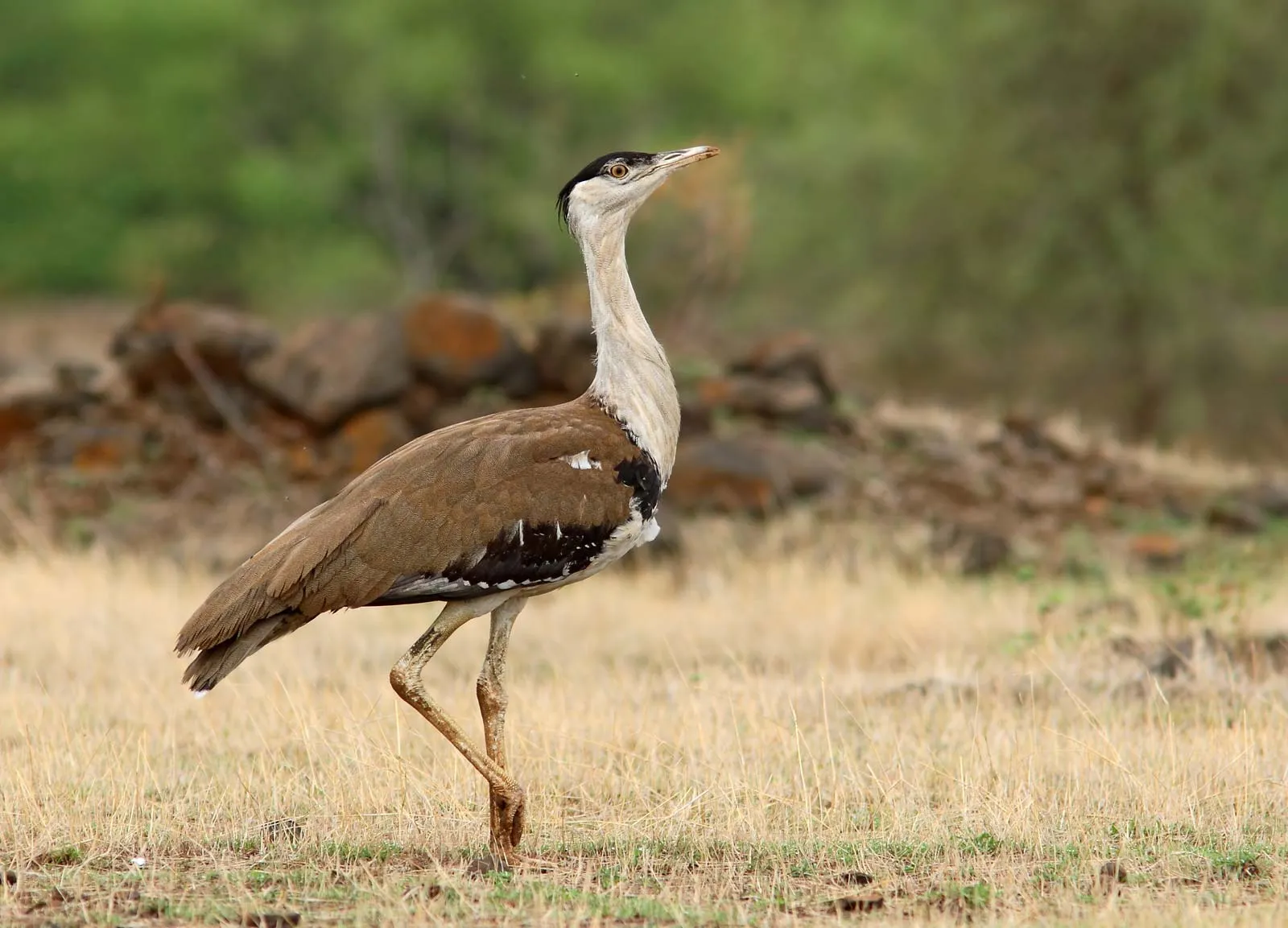
Indian Bustard
Ardeotis nigriceps
Order:
Family:
Size:
Weight:
Taxonomy:
Short Description:
The Great Indian Bustard (Ardeotis nigriceps) or Indian bustard is a bustard found on the Indian subcontinent. A large bird with a horizontal body and long bare legs, giving it an ostrich-like appearance, this bird is among the heaviest of the flying birds. Once common on the dry plains of the Indian subcontinent, as few as 250 individuals were estimated in 2011 to survive and the species is critically endangered by hunting and loss of its habitat, which consists of large expanses of dry grassland and scrub. These birds are often found associated in the same habitat as blackbuck. It is protected under Wildlife Protection Act 1972 of India. The great Indian bustard is a large ground bird with a height of about one meter. It is unmistakable with its black cap contrasting with the pale head and neck. The body is brownish with a black patch spotted in white. The male is deep sandy buff colored and during the breeding season has a black breast band. The crown of the head is black and crested and is puffed up by displaying males. In the female which is smaller than the male, the head and neck are not pure white and the breast band is either rudimentary, broken or absent. Among bustards, this species is smaller only than the Kori bustard and the great bustard in size. It is also the largest land bird in its native range. The great Indian bustard stands at about 1 m (3.3 ft) tall, having a somewhat long neck and quite long legs. The female as in most members of the bustard family are typically considerably smaller. Males have a well-developed gular pouch which is inflated when calling during display and helps produce the deep resonant calls. The great Indian bustard is omnivorous. Apparently, insects, consisting mainly of Orthoptera, but also beetles,( particularly Mylabris sp.) are preferred in the diet. Alternatively, they will take grass seeds, berries (largely of the genera Ziziphus and Eruca), rodents and reptiles (in Rajasthan they are known to take Indian spiny-tailed lizards Uromastyx hardwickii). In cultivated areas, they feed on crops such as exposed groundnut, millets and pods of legumes. In Pakistan it prefers dry grasslands with bushes of Cholistan and Tharr deserts. Depending on good moonsoon rains , but generally an eratic winter visitor to Pakistan's easter borders of Cholistan and Thar Deserts, in small groups.
Far far away, behind the word mountains, far from the countries Vokalia and Consonantia, there live the blind texts. Separated they live in Bookmarksgrove right at the coast
Bahawalpur,Rahim Yar Khan,Sanghar,Tharparkar
Far far away, behind the word mountains, far from the countries Vokalia and Consonantia, there live the blind texts. Separated they live in Bookmarksgrove right at the coast
About Photographer : Hello World
Facebook
Twitter
Instagram
Flicker
LinkedIn


